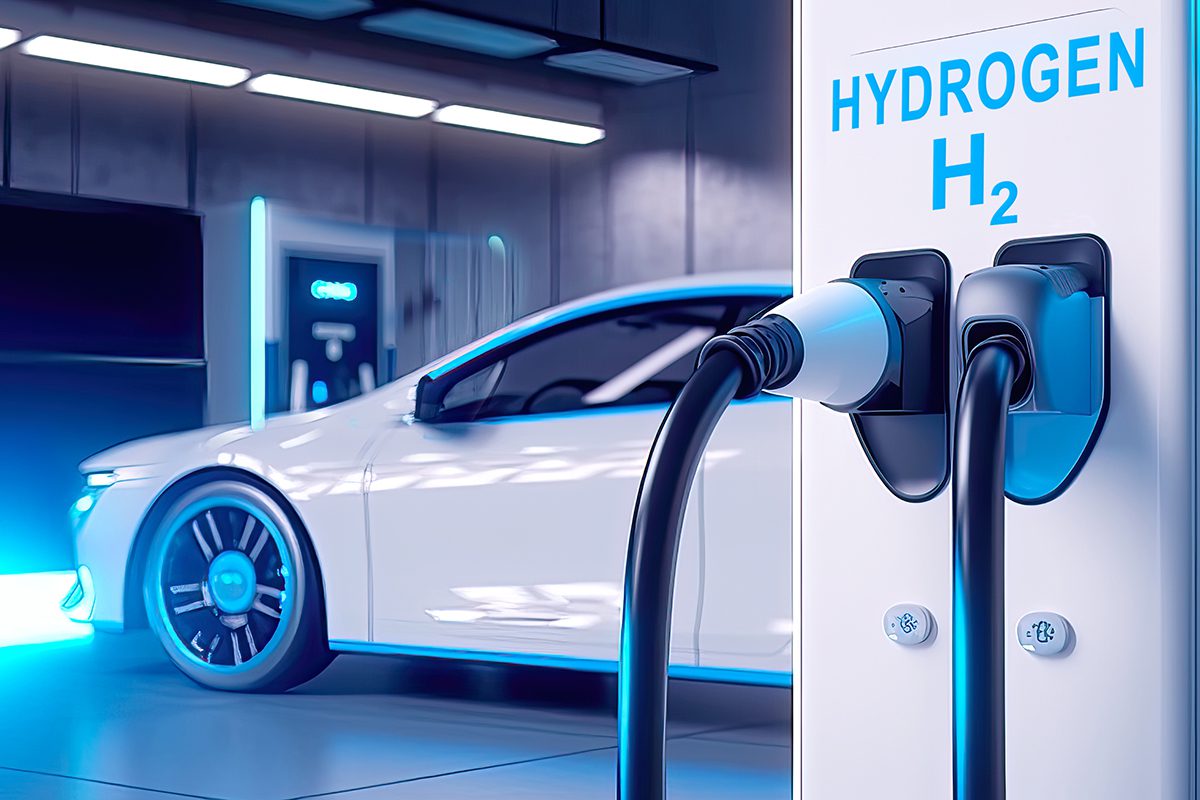Introduction to Hydrogen Vehicles and How They Work

Introduction
Since the invention of the first automobiles, vehicles have evolved into highly advanced machines. However, traditional internal combustion engine (ICE) vehicles running on gasoline and diesel have contributed to significant environmental pollution and global warming. As a result, automobile manufacturers are seeking sustainable alternatives, and hydrogen fuel cell vehicles (FCEVs) have emerged as a promising solution.
Hydrogen and Oxygen: A Clean Alternative to Fossil Fuels
Hydrogen and oxygen can be combined to generate electricity, offering a clean energy source for automobiles. This process occurs within a fuel cell, which converts chemical energy into electrical energy with only water vapor as the byproduct. Unlike traditional batteries, fuel cells continuously generate electricity as long as hydrogen and oxygen are supplied.
How Hydrogen Fuel Cells Work
Fuel cells operate similarly to batteries but require fuel (hydrogen) and oxygen to generate electricity. The basic working principle of a hydrogen fuel cell is as follows:
- Hydrogen gas (H₂) is injected into the anode side of the fuel cell.
- A catalyst (typically platinum) splits hydrogen molecules into protons (H⁺) and electrons (e⁻).
- The protons pass through an electrolyte membrane to the cathode, while electrons travel through an external circuit, creating electricity.
- Oxygen from the air reacts with protons and electrons at the cathode to produce water (H₂O) and heat.
This reaction results in zero carbon emissions, making hydrogen fuel cells one of the cleanest energy sources for vehicles.
Practical Application of Fuel Cells in Vehicles
Fuel cells provide continuous electricity to the vehicle’s electric motor. The only emissions are water vapor and heat, making hydrogen-powered vehicles environmentally friendly and sustainable.
Challenges of Fuel Cells:
- Hydrogen and oxygen do not naturally combine easily. Engineers must use advanced catalysts.
- Hydrogen infrastructure is still limited.
- Production costs of fuel cells remain high due to the need for expensive materials such as platinum.
What is a Hydrogen Vehicle?
Hydrogen vehicles, also known as Hydrogen Fuel Cell Electric Vehicles (FCEVs), are electric vehicles powered by hydrogen fuel cells rather than traditional lithium-ion batteries. Unlike Battery Electric Vehicles (BEVs), which rely solely on rechargeable batteries, FCEVs generate electricity on demand by consuming hydrogen.
Examples:
- Toyota Mirai
- Hyundai Nexo
- Honda Clarity Fuel Cell
- Hydrogen-powered trucks and buses
How is Hydrogen Produced for Vehicles?
1. Green Hydrogen (Electrolysis)
- Process: Splitting water using renewable electricity.
- Pros: Zero emissions.
- Cons: Expensive.
2. Blue Hydrogen (SMR + CCS)
- Process: Extracting hydrogen from natural gas with carbon capture.
- Pros: Lower carbon footprint.
- Cons: Still depends on fossil fuels.
3. Gray Hydrogen (SMR)
- Process: Hydrogen from natural gas without carbon capture.
- Pros: Cheapest.
- Cons: High emissions.
How Do Hydrogen Vehicles Store and Use Hydrogen?
1. Hydrogen Storage
- Stored in high-pressure tanks (700 bar or 10,000 psi).
- Liquid hydrogen requires cryogenic cooling (-253°C).
2. Supply to Fuel Cell
- Oxygen is drawn from air.
- Hydrogen comes from onboard tanks.
- Fuel cell powers the electric motor.
- Excess energy stored in a small battery.
Advantages of Hydrogen Vehicles
- Faster Refueling Time: 3–5 minutes.
- Extended Driving Range: Up to 400–500 miles.
- Zero Emissions: Only water vapor.
- Lightweight: Fuel cells weigh less than lithium-ion batteries.
- Renewable Integration: Can store excess renewable energy.
Challenges of Hydrogen Vehicles
- Infrastructure: Limited refueling stations.
- High Costs: Fuel cells use platinum.
- Energy Inefficiency: Less efficient than direct electricity use.
- Safety: Hydrogen is flammable.
Comparison: Hydrogen Vehicles vs. Battery Electric Vehicles (BEVs)
| Feature | Hydrogen Fuel Cell (FCEV) | Battery Electric (BEV) |
|---|---|---|
| Refueling/Charging Time | 3–5 minutes | 30 minutes – 12 hours |
| Driving Range | 400–500 miles | 200–350 miles |
| Emissions | Zero (Water vapor only) | Zero (Depends on source) |
| Infrastructure | Limited | Expanding |
| Weight & Storage | Lighter | Heavy batteries |
| Energy Efficiency | Lower | Higher |
The Future of Hydrogen Vehicles
Governments and automakers are investing heavily in hydrogen technology:
- Toyota, Hyundai, Honda leading development.
- Hydrogen trucks and buses in progress.
- Governments funding infrastructure.
- Research is reducing costs and improving fuel cell tech.
Conclusion
Hydrogen vehicles offer zero-emission, long-range driving with fast refueling. Their future depends on improved production, expanded infrastructure, and reduced costs. With continued advancements, hydrogen fuel cell vehicles could play a major role in clean transportation.
References & Further Reading
Related Articles

Hydrogen and Global Policies: Challenges and Opportunities
Hydrogen, the most abundant element in the universe, has long been used in industrial processes and energy production. However, in recent decades, its role in the global transition to sustainable energy systems has become more prominent.

The History of Hydrogen Discovery and Development
Hydrogen, the most abundant element in the universe, has played a crucial role in scientific advancements and industrial applications. From its initial discovery in the 18th century to its modern use in energy and aerospace, hydrogen has transformed various industries and continues to be at the forefront of clean energy solutions.

The Use of Hydrogen in Optical Fibers
Optical fibers are among the most innovative and essential technologies in modern communications and telecommunications. As advancements continue across various fields, one of the complex yet highly practical methods for improving optical fiber performance is the integration of hydrogen. Hydrogen plays a crucial role in enhancing the optical, mechanical, and chemical properties of optical fibers, making them more efficient for high-speed data transmission and long-distance communication.
